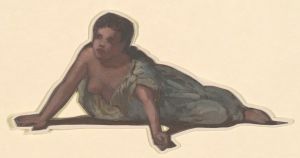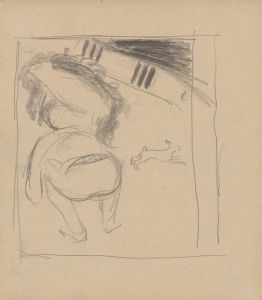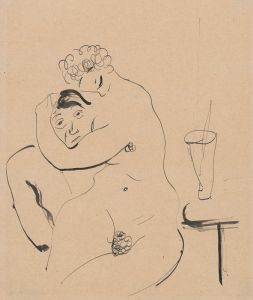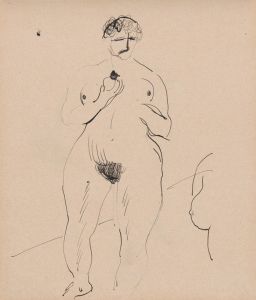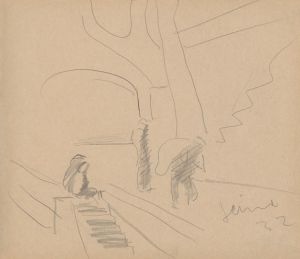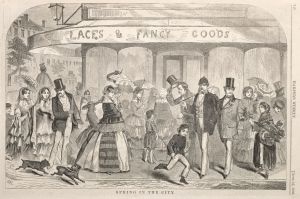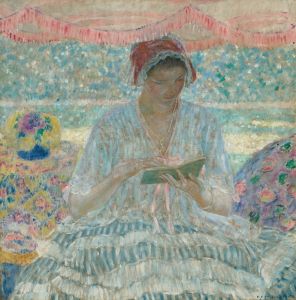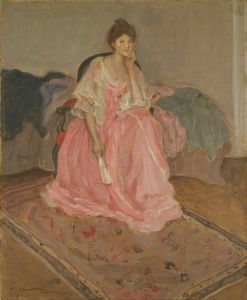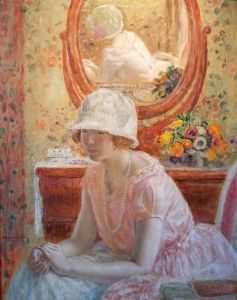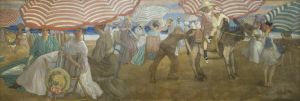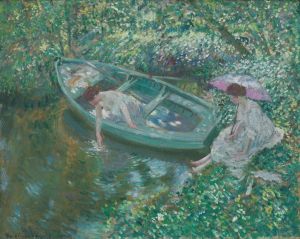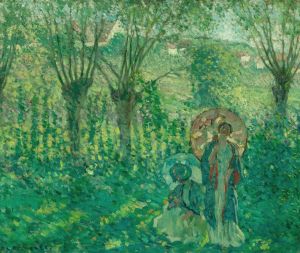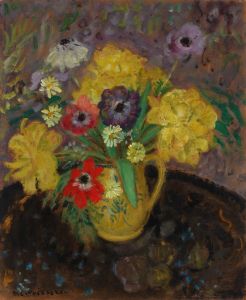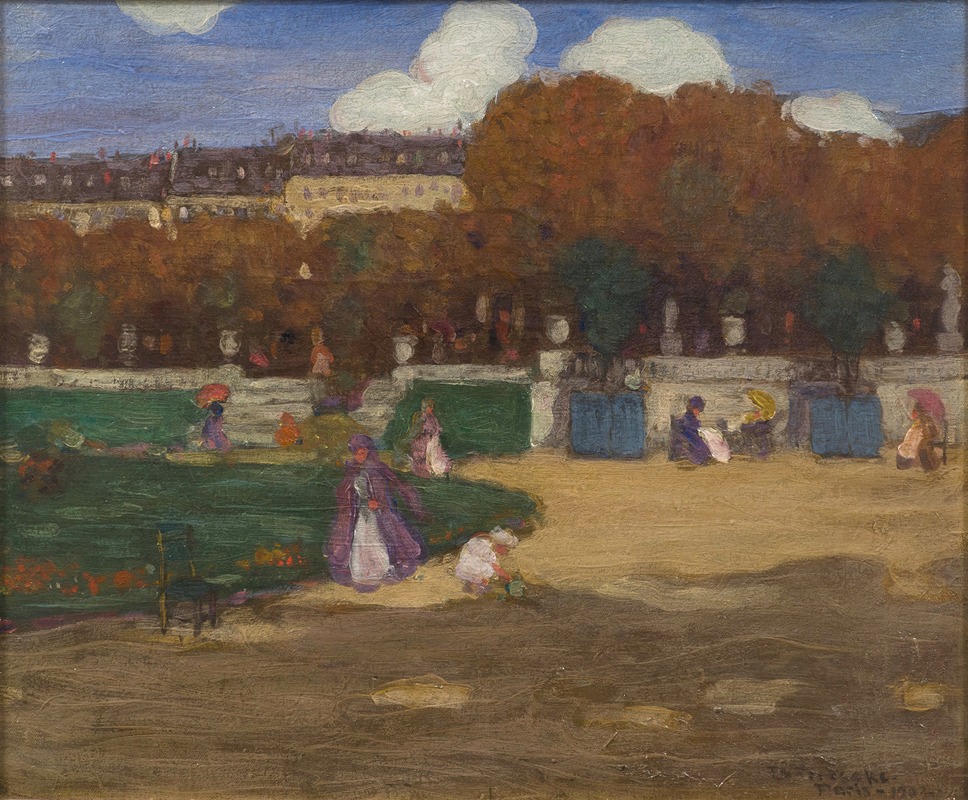
Luxembourg Gardens, Paris
A hand-painted replica of Frederick Carl Frieseke’s masterpiece Luxembourg Gardens, Paris, meticulously crafted by professional artists to capture the true essence of the original. Each piece is created with museum-quality canvas and rare mineral pigments, carefully painted by experienced artists with delicate brushstrokes and rich, layered colors to perfectly recreate the texture of the original artwork. Unlike machine-printed reproductions, this hand-painted version brings the painting to life, infused with the artist’s emotions and skill in every stroke. Whether for personal collection or home decoration, it instantly elevates the artistic atmosphere of any space.
Frederick Carl Frieseke (1874–1939) was an American Impressionist painter who spent a significant portion of his career in France. One of his notable works is "Luxembourg Gardens, Paris," which captures the serene and picturesque environment of the famous Luxembourg Gardens in Paris. Frieseke is known for his vibrant use of color and light, which are hallmarks of the Impressionist movement.
The Luxembourg Gardens, or Jardin du Luxembourg, is a public park located in the 6th arrondissement of Paris, created in 1612 by Marie de' Medici, the widow of King Henry IV of France, for her new residence, the Luxembourg Palace. The gardens are known for their meticulously maintained lawns, tree-lined promenades, flowerbeds, and the large octagonal pond, the Grand Bassin, where children sail model boats. The gardens also feature numerous statues, fountains, and an orchard with a variety of apple and pear trees.
Frieseke's painting of the Luxembourg Gardens reflects his fascination with capturing everyday scenes of leisure and relaxation. His work often depicted women in intimate, sunlit settings, and "Luxembourg Gardens, Paris" is no exception. The painting showcases Frieseke's skill in rendering the dappled light filtering through the trees, creating a sense of warmth and tranquility. The figures in the painting are engaged in leisurely activities, such as reading, strolling, or simply enjoying the peaceful surroundings, which was a common theme in Frieseke's work.
Frieseke was part of the Giverny Colony, a group of American artists who settled in the village of Giverny, France, near the home of Claude Monet. This group was heavily influenced by Monet and the French Impressionists, and Frieseke's work demonstrates the impact of this artistic environment. His use of light and color, as well as his focus on capturing the fleeting moments of everyday life, aligns with the principles of Impressionism.
"Luxembourg Gardens, Paris" exemplifies Frieseke's mature style, characterized by a harmonious blend of vibrant colors and delicate brushwork. The painting's composition is carefully balanced, with the figures and natural elements arranged to create a sense of depth and movement. Frieseke's attention to detail and his ability to convey the play of light and shadow make this work a significant example of his contribution to the Impressionist movement.
Throughout his career, Frieseke exhibited his work in various prestigious venues, including the Paris Salon and the Société Nationale des Beaux-Arts. His paintings were well-received by both critics and the public, earning him a reputation as one of the leading American Impressionists of his time. Today, "Luxembourg Gardens, Paris" and other works by Frieseke can be found in major art museums and private collections around the world, continuing to be appreciated for their beauty and technical mastery.
In summary, "Luxembourg Gardens, Paris" by Frederick Carl Frieseke is a quintessential example of American Impressionism, capturing the idyllic charm of one of Paris's most beloved public spaces. Through his expert use of color, light, and composition, Frieseke invites viewers to experience the tranquil beauty of the Luxembourg Gardens as seen through the eyes of an Impressionist master.





